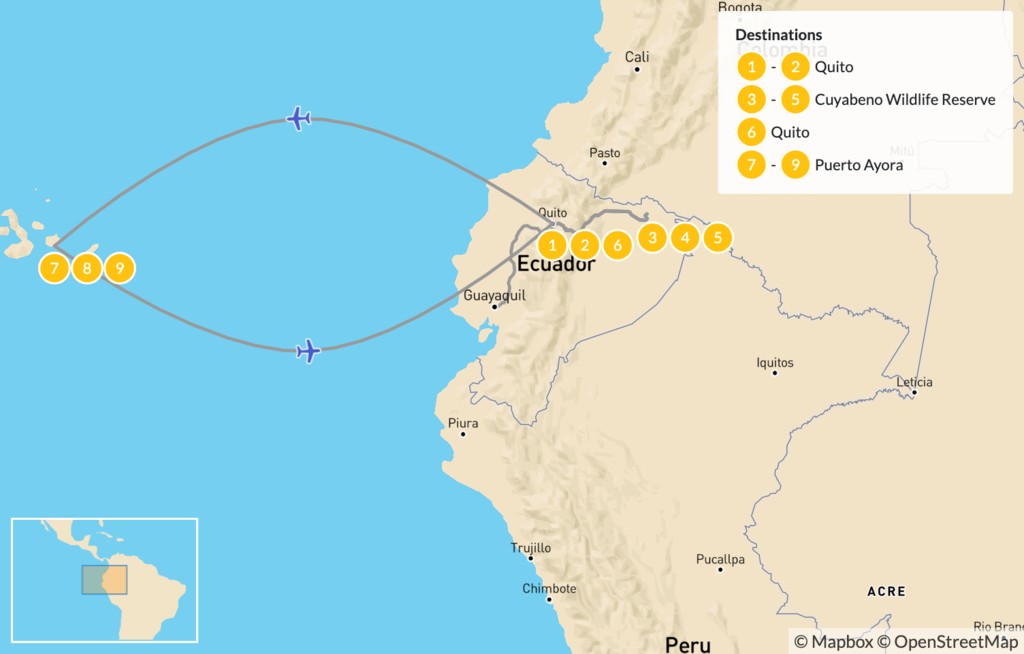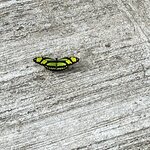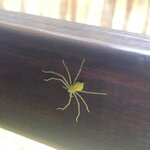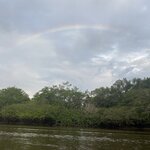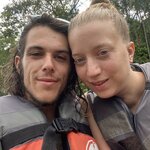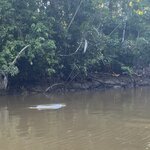Highlights
- Explore the biodiversity of the Amazon rainforest of the Cuyabeno Reserve
- Visit the indigenous Seoqueya community
- Explore an uninhabited island & snorkel with playful sea lions
- Spot giant tortoises in the highlands of Santa Cruz Island
- Relax at pristine beaches on the Galapagos Islands
Brief Itinerary
| Day | Highlights | Overnight |
|---|---|---|
| Day 1 | Arrival to Quito | Quito |
| Day 2 | Quito Historic Center, Panecillo Hill, & Middle of the World Tour | Quito |
| Day 3 | Quito to Cuyabeno Reserve & Canoe Trip to Jungle Lodge | Cuyabeno Wildlife Reserve |
| Day 4 | Wildlife in the Amazon: Sloths, Dolphins, & More | Cuyabeno Wildlife Reserve |
| Day 5 | Indigenous Community, Laguna Grande, & Igapó | Cuyabeno Wildlife Reserve |
| Day 6 | Return to Quito | Quito |
| Day 7 | Flight to Santa Cruz Island, Highlands, & Charles Darwin Station | Puerto Ayora |
| Day 8 | Santa Cruz Island & Kayaking Tortuga Bay | Puerto Ayora |
| Day 9 | Day Trip to an Unpopulated Island | Puerto Ayora |
| Day 10 | Transfer to Airport on Baltra Island |
Detailed Itinerary
Day 1: Arrival to Quito

Welcome to Quito, the capital of Ecuador! Arrive at the Mariscal Sucre International Airport (UIO), where your driver will meet you to transfer to your accommodation in the city center, a one-hour trip. Along the way, you'll get a short introduction into Quito´s history and a quick briefing on the next day's activities.
The entire city of Quito is a UNESCO World Heritage Site, standing at an altitude of 9,350ft (2,850m). It welcomes visitors with its picturesque plazas situated between mountain peaks. The city has an abundance of market stands, shamanistic healers, and fourth-generation hat makers, as well as a vibrant and sophisticated culinary and nightlife scene.
Day 2: Quito Historic Center, Panecillo Hill, & Middle of the World Tour

The human occupation of Quito dates back thousands of years. Prior to the arrival of Spanish conquistadores, the main cultures in the area were the Quitus, as well as the Inca, whose empire spread across vast stretches of South America. The city was colonized by the Spanish and recognized as a city in the mid-16th century. In 1978, together with Kraków in Poland, the entire city became the first UNESCO World Heritage Site.
After breakfast at the hotel, visit the old town and meander down romantic narrow streets to see the colonial Churches of San Fransisco, La Compañia, and other historical landmarks.
This visit is followed by a short stop at the top of El Panecillo Hill where the impressive statue of the Virgin Mary is located. It's a great place for photos of panoramic city views.
In the afternoon, visit the Equator Monument, which highlights the exact location of the equatorial line according to the Franco-Spanish mission that determined its approximate location. It's also the location of the Ethnographical Museum that showcases the indigenous culture and ethnography of Ecuador.
After a full day, return to your hotel.
Day 3: Quito to Cuyabeno Reserve & Canoe Trip to Jungle Lodge

In the morning, leave Quito behind as you travel to the rainforest. Your destination is the small city of Lago Agrio, which you will reach by 9:30 AM. From here, travel by bus for another 2.5 hours to El Puente, the main entrance to the Cuyabeno Reserve.
Stop here for a box lunch, then continue on the Cuyabeno River by motorized canoe. The lodge is located three hours downriver, giving you plenty of time to take in the sights and look for wildlife on the narrow river banks
Arrive at the lodge and settle in, then take a tour of the property. After dinner, meet with your guide to discuss the upcoming itinerary, then fall asleep to the sounds of the nighttime frogs and rainforest insects.
Day 4: Wildlife in the Amazon: Sloths, Dolphins, & More

Get an early start this morning, since dawn is the best time to see many of the forest animals. After breakfast, head out for a walk with your naturalist guide. You'll learn and understand how so many species in the rainforest coexist in balance with each other. Your guide will also point out different medicinal plants, which have been used by indigenous communities for many generations and continue to be utilized by locals for health and healing. As you walk, look for frogs and snakes, butterflies, centipedes, millipedes, birds, monkeys, and other mammals along the trail.
After your hike, return to the lodge for lunch. In the afternoon, explore the Cuyabeno River to see animals that live in the dense foliage alongside the riverbanks, especially monkeys, macaws, toucans, and sloths. You'll also get to see river dolphins, an incredibly unique and fascinating animal that's adapted to live inland.
Before dinner, head back out to the dark forest to see a completely new cast of characters: insects, spiders, snakes, colorful frogs, and other species come out after the sun sets. Return to the lodge and have dinner, accompanied by the nocturnal sounds of the jungle.
Chat with a local specialist who can help organize your trip.
Day 5: Indigenous Community, Laguna Grande, & Igapó

Enjoy an early morning walk through the forest to see wildlife, especially monkeys and birds. Return to the lodge for breakfast, then continue by motorized canoe along the "Turtle Path" to visit the Seoqueya community, where several families of the indigenous Siona group live. One of the family members will demonstrate traditional cooking techniques, including preparing the typical yucca bread, called casave. Try your hand at making bread under instruction from the family as your guide explains local traditions and cultures.
In the afternoon, continue by motorized canoe along the Cuyabeno River to Laguna Grande. Here, you'll get to explore a unique rainforest ecosystem: flooded forest (Igapo), which is characterized by massive trees and lush greenery.
After exploring the lagoon, cool off with a swim in the calm waters while taking in the sunset. Continue your adventure downriver to see more nocturnal wildlife, especially caimans, before returning to the lodge.
Day 6: Return to Quito

Enjoy another early morning in the rainforest with a canoe trip on the river to see the sunrise and take in the peaceful atmosphere.
After breakfast, gather your belongings for the return trip. Navigate back upriver to El Puente de Cuyabeno, then break for a box lunch. From here, take the bus back to Lago Agrio, then return to Quito.
Day 7: Flight to Santa Cruz Island, Highlands, & Charles Darwin Station

In the morning, head to the airport for your flight to the Galapagos Islands. When you arrive at Baltra Airport, meet your guide, then continue to Santa Cruz Island.
Enjoy lunch at a local ranch in the highlands, then spend some time with giant tortoises in the wild. After, continue Puerto Ayora and check in to your hotel.
In the afternoon, visit the Charles Darwin Station, where scientists from all over the world meet and work together. Environmental projects include water analysis, protection of endemic wildlife, effects of tourism on nature, and other pressing issues. Visit the turtle rearing station to see where animals are raised before being released into nature. Keep an eye out for land iguanas, who live around the station.
Stay overnight in Puerto Ayora.
Day 8: Santa Cruz Island & Kayaking Tortuga Bay

Spend the day exploring this area on foot and on water. Start with a 45-minute hike from Puerto Ayora to Tortuga Bay, one of the Galapagos Archipelago's most beautiful beaches. Take a kayak out onto the water to see marine life up close and see the coastline from a different perspective.
After kayaking, sunbathe on the beach or head back under the waves for some afternoon snorkeling. Stay the night in Puerto Ayora.
Day 9: Day Trip to an Unpopulated Island

Your adventure today includes a yacht tour to an unpopulated island. Depending on the weather, scheduling, and permissions by the National Park, you'll visit one of the following islands: Santa Fé, South Plazas, Bartolomé or North Seymour.
Each island is unique and offers spectacular scenery and an opportunity to see rare wildlife up close. Santa Fé and South Plazas are home to endemic land iguanas; while Bartolomé is known for beautiful lava sceneries. On North Seymour, look for frigate birds, land iguanas, and blue-footed boobies.
Today's adventure is a group tour, with a maximum group size of 20. In the evening, return to Puerto Ayora to enjoy some free time.
Day 10: Transfer to Airport on Baltra Island

If there is enough free time before your transfer to the airport, do some last-minute souvenir shopping or take a last stroll through Puerto Ayora.
At the designated time, your driver will pick you up at your hotel and take you to the Itabaca Channel, which you will cross on a ferry. For the last part of your trip to the airport, take the public shuttle bus to the terminal, where your program ends with your return flight to the mainland.


